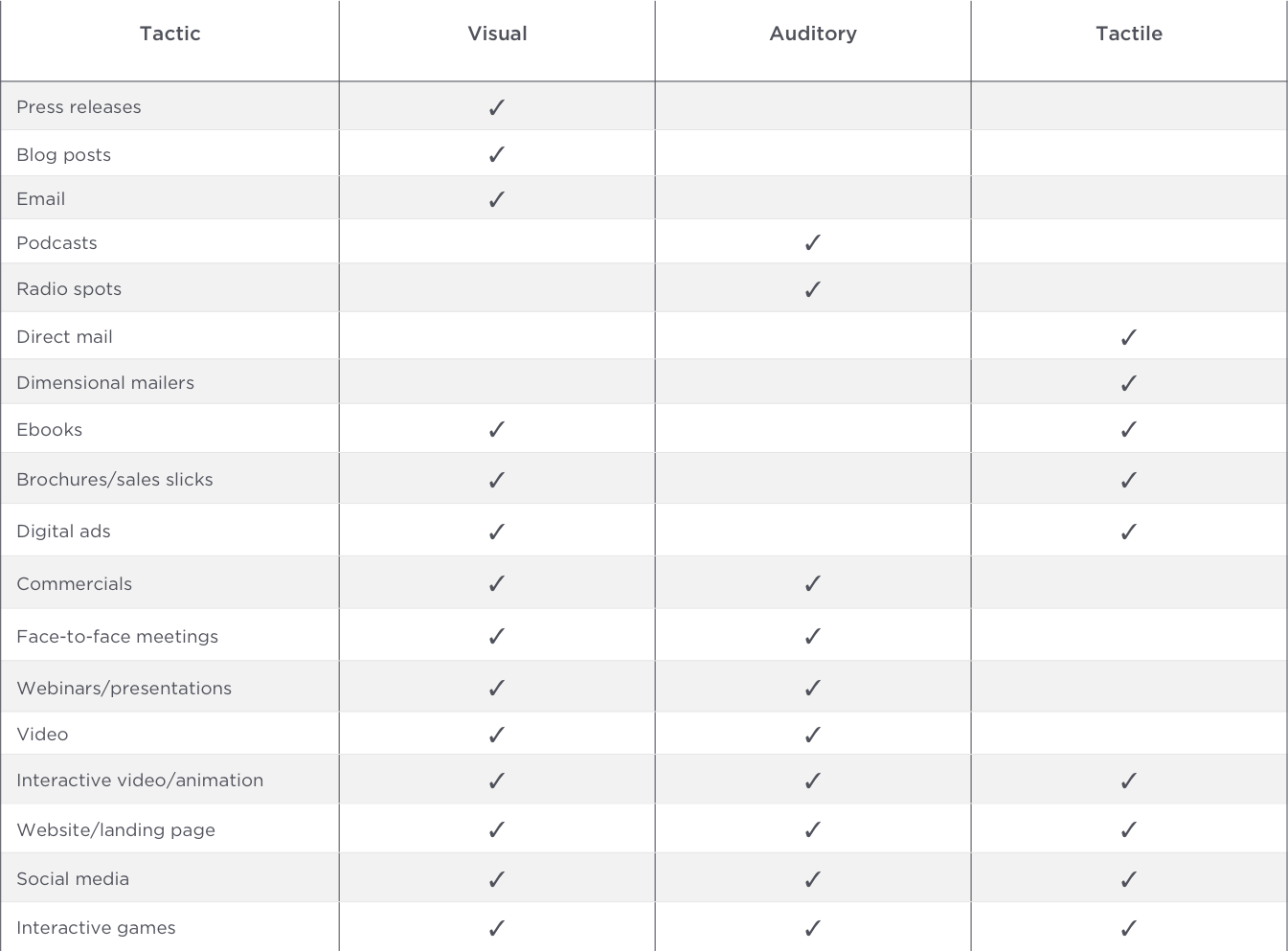Did you know that we all learn a little differently? That’s why it’s important to vary your marketing media to ensure all types of learners (and we’re all learners) can understand and process the message.
While we often hear marketers talk about understanding the demographics and generation of their target audience, discussing the various ways people learn isn’t always top of mind.
But it should be.
After all, if you’re sharing your marketing message, and promoting your company’s products and services in a way that doesn’t connect with your audience, it’ll fall on deaf ears.
The Three Learning Styles
There are three different ways people absorb and process information – and typically, we each have various aspects of the three with one that’s dominant:
1) Auditory - 34% of people are auditory learners, which means they:
- Retain information through hearing, listening and speaking.
- Often prefer to be told how to do things, summarizing the main points out loud to help with memorization.
- Notice different aspects of speaking.
- Often have talents in music, and may concentrate better with soft music playing in the background.
- Enjoy conversations and podcasts.
2) Visual – 29% of people are visual learners, which means they:
- Use visual objects, such as graphs, charts, pictures and seeing information.
- Can read body language well, and have a good perception of aesthetics.
- Are able to memorize and recall information easily.
- Tend to remember things that are written down.
- Learn better by watching.
3) Tactile (kinesthetic) – 37% of people are tactile or kinesthetic learners, which means they:
- Like to use the hands-on approach to learn new material.
- Are generally good in math and science.
- Would rather demonstrate how to do something vs. verbally explaining it.
- Usually prefers group work more than the other learning styles.
- Need to physically manipulate something, such as a pen – or be doing something physical while learning (e.g., standing, walking, chewing gum).
To better understand, you may wish to take this self-test to see which type of learner you are.
Putting This Knowledge to Work for Your Marketing Efforts
Once you’ve identified your business and marketing objectives and have your marketing strategy in place, it’s time to define the tactics that will best help you accomplish those goals.
As you start plotting the plan, keep in mind the three different types of learners, and how the various tactics account for each:

Understanding that your target audience absorbs information in different ways help you better create tactics that will resonate and sink in – ultimately enhancing the outcome and actions taken from the marketing message.
Interested in learning more about how you can enhance your marketing strategy with various tactics that appeal to all types of learners? Reach out today.
As always stay tuned until the next time we go Off the Radar.